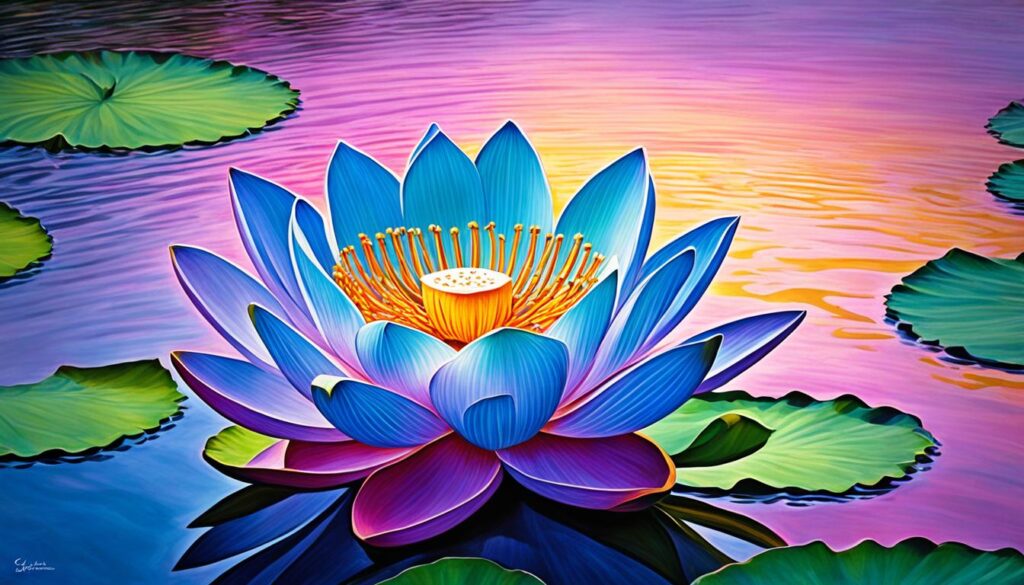Have you ever wondered about the ancient and mystical teachings of Shingon Buddhism? This esoteric and profound school of Japanese Buddhism, also known as tantric Buddhism, holds secrets that can unlock spiritual transformation and enlightenment. From the sacred mountain of Koyasan to the intricate rituals of deity visualization, Shingon Buddhism offers a unique path to personal and societal harmony. Are you ready to delve into the mysteries of this mystical tradition? Let us embark on a journey together and explore the transformative power of Shingon Buddhism.
The Transformative Power of Shingon Buddhism.
Shingon Buddhism offers a transformative approach to spirituality that can bring profound changes to your life. Through its practices, Shingon Buddhism promotes mindfulness, compassion, and personal and societal harmony. These teachings provide valuable insights into addressing modern challenges and finding inner peace and balance.
Mindfulness is a key practice in Shingon Buddhism that helps you cultivate a deeper awareness of yourself and your surroundings. By being fully present in the present moment, you can gain clarity and tranquility, allowing you to make conscious choices and live with intention.
Compassion, another fundamental aspect of Shingon Buddhism, encourages the cultivation of empathy and kindness towards yourself and others. By practicing compassion, you develop a greater understanding of others’ suffering and extend love and support to those in need. This fosters harmony and understanding within relationships and communities.
Shingon Buddhism emphasizes the importance of personal harmony, which involves finding balance and unity within yourself. By nurturing your mind, body, and spirit, you can achieve a state of inner peace and alignment. This personal harmony allows you to live authentically and make choices that align with your values and aspirations.
Societal harmony is also an integral part of Shingon Buddhism. The teachings encourage individuals to contribute to the greater good and create harmonious communities. By nurturing compassion and understanding within society, Shingon Buddhism promotes cooperation, empathy, and a sense of interconnection among all beings.
By embracing the transformative power of Shingon Buddhism, you can embark on a journey of self-discovery, spiritual growth, and a deeper connection with the world around you.
| Mindfulness | Compassion | Personal Harmony | Societal Harmony |
|---|---|---|---|
| Cultivating awareness and clarity | Developing empathy and kindness | Finding balance and unity within oneself | Promoting cooperation and interconnection |
| Living with intention and conscious choices | Extending love and support to others | Nurturing mind, body, and spirit | Contributing to the greater good |
| Enhancing focus and presence | Fostering harmony within relationships | Aligning actions with values and aspirations | Cultivating empathy and understanding in society |
The Ancient Mantras and Rituals of Shingon Buddhism.
Central to the practice of Shingon Buddhism are the ancient mantras and rituals that serve as vehicles for spiritual transformation. Mantras are sacred sounds or syllables that are chanted or recited as a means of focusing the mind and invoking the presence of enlightened beings. These mantras are believed to carry potent spiritual energy and can be used to purify the mind, cultivate inner qualities, and establish a connection with the divine.
Rituals in Shingon Buddhism involve intricate gestures, visualizations, and offerings, creating a sacred space and providing a framework for spiritual practice. These rituals often involve the use of mandalas, intricate geometric patterns that represent the universe and serve as aids for meditation and visualization.
To better understand the significance of mantras and rituals in Shingon Buddhism, let’s take a closer look at each:
Mantras in Shingon Buddhism
Mantras play a central role in Shingon Buddhism, acting as transformative tools for practitioners. These sacred sounds are believed to carry inherent spiritual power and can be used to evoke specific qualities or states of mind. By reciting mantras with focused intention and concentration, practitioners aim to purify their minds, cultivate virtues, and deepen their connection to enlightened beings.
The recitation of mantras is often accompanied by specific hand gestures and visualizations, enhancing the overall spiritual experience. Through the repetition of mantras, practitioners can enter a state of deep concentration and attune themselves to the enlightened qualities embodied by the mantra’s associated deity.
Rituals in Shingon Buddhism
Rituals are an integral part of Shingon Buddhism, providing a structured framework for spiritual practice. These rituals serve as a means to express devotion, create a sacred space, and engage in symbolic acts of offering and purification.
During rituals, practitioners perform intricate gestures, known as mudras, which have symbolic meanings and represent different aspects of enlightenment. These mudras, combined with visualization techniques and mantra recitation, help to heighten concentration and deepen the practitioner’s connection to the divine.
Offerings of food, incense, and flowers are commonly made during rituals, symbolizing generosity and gratitude. By engaging in rituals, practitioners not only connect with the spiritual realm but also cultivate qualities such as gratitude, compassion, and mindfulness in their daily lives.
Below is a table highlighting some of the key mantras and rituals in Shingon Buddhism:
| Mantra | Deity | Purpose |
|---|---|---|
| Aum | Dainichi Nyorai | Purify the mind and attain enlightenment |
| Kanzeon | Kanzeon Bosatsu | Cultivate compassion and alleviate suffering |
| Kongokai | Buddha Vairocana | Aid in meditation and realization of the ultimate truth |

The Teachings of Kobo Daishi in Shingon Buddhism.
Kobo Daishi, also known as Kukai, was the founder of Shingon Buddhism and a profound philosopher and scholar. His teachings emphasize the integration of study, practice, and realization on the path to enlightenment. Kobo Daishi’s philosophy centers on the concept of the inseparability of body and mind and the interdependence of all things. He believed that enlightenment can be attained through the cultivation of wisdom and compassion, as well as the practice of mantra recitation, meditation, and ritual. Kobo Daishi’s teachings continue to inspire and guide practitioners of Shingon Buddhism to this day.
The Significance of Deity Visualization in Shingon Buddhism.
Deity visualization is a fundamental practice in Shingon Buddhism, allowing practitioners to meditate and visualize enlightened beings, known as deities. This practice holds deep spiritual significance, as it is believed that these deities embody different aspects of enlightenment and serve as compassionate guides and sources of inspiration on the spiritual path.
By engaging in deity visualization, you cultivate a profound connection with these enlightened beings, tapping into their wisdom and compassion that resides within you. Through the power of visualization, you awaken your own innate qualities and potential, nurturing a deep sense of self-awareness and spiritual growth.

This practice of deity visualization is often accompanied by mantra recitation and ritual offerings, further deepening your connection with the divine. The recitation of mantras, which are sacred sounds or syllables, helps to purify the mind, enhance focus, and invoke the presence of the enlightened deities.
Additionally, the ritual offerings made during deity visualization symbolize your reverence and gratitude towards the deities. These offerings can include flowers, incense, and symbolic objects, creating a sacred space and enhancing the overall spiritual experience.
Benefits of Deity Visualization
- Awakening Wisdom: Through deity visualization, you tap into the wisdom of enlightened beings, expanding your own understanding and insight.
- Nurturing Compassion: By connecting with compassionate deities, you cultivate empathy and kindness towards yourself and others, deepening your capacity for compassion.
- Clarity and Focus: Visualization practices provide a way to develop mental clarity and concentration, enhancing your ability to stay present and focused in daily life.
- Spiritual Guidance: The enlightened deities serve as guides on your spiritual journey, providing inspiration, guidance, and support.
- Transformation: Deity visualization acts as a catalyst for spiritual transformation, helping you dissolve negative patterns and cultivate positive qualities.
| Benefits of Deity Visualization | Description |
|---|---|
| Awakening Wisdom | Tap into the wisdom of enlightened beings to expand understanding and insight. |
| Nurturing Compassion | Cultivate empathy and kindness towards oneself and others, deepening compassion. |
| Clarity and Focus | Develop mental clarity and concentration for enhanced focus in daily life. |
| Spiritual Guidance | Enlightened deities serve as guides, providing inspiration, guidance, and support. |
| Transformation | Catalyst for spiritual transformation, dissolving negative patterns and cultivating positive qualities. |
The Mysticism of Shingon Buddhism in Modern Times.
In modern times, the mysticism of Shingon Buddhism continues to resonate with individuals seeking spiritual growth and insight. The teachings and practices of Shingon Buddhism offer a unique approach to addressing modern challenges, such as stress, anxiety, and disconnectedness.
The emphasis on mindfulness and compassion provides practical tools for navigating the complexities of daily life and fostering personal and societal harmony. By embracing the mystique of Shingon Buddhism, individuals can embark on a transformative journey towards self-discovery, enlightenment, and a deeper connection with the world around them.

| Mindfulness | Compassion | Personal Harmony | Societal Harmony |
|---|---|---|---|
| Increases awareness and presence | Cultivates empathy and kindness | Promotes inner balance and tranquility | Fosters understanding and cooperation |
| Reduces stress and anxiety | Enhances relationships and communities | Aligns the mind, body, and spirit | Creates a harmonious society |
| Improves focus and concentration | Encourages self-care and self-compassion | Brings harmony to thoughts and emotions | Builds bridges across diverse backgrounds |
Conclusion.
Shingon Buddhism holds the transformative power to awaken individuals to their true nature. Through the recitation of ancient mantras, engagement in intricate rituals, study of Kobo Daishi’s teachings, and the practice of deity visualization, practitioners embark on a profound journey of self-discovery and spiritual growth.
By actively participating in the rituals and practices of Shingon Buddhism, individuals cultivate mindfulness and compassion, paving the way for personal and societal harmony. The ancient mantras carry deep spiritual energy, purifying the mind and establishing a connection with the divine. The rituals create a sacred space for spiritual practice, utilizing intricate gestures, visualizations, and offerings, while mandalas aid in meditation and visualization.
In modern times, Shingon Buddhism continues to be relevant and resonates with individuals seeking inner peace and enlightenment. Its teachings and practices provide practical tools to navigate the challenges of the modern world, such as stress and disconnectedness. The emphasis on mindfulness and compassion offers a path to address these challenges, fostering personal well-being and promoting societal harmony.
Embracing the mystique of Shingon Buddhism is an invitation to embark on a transformative journey. By delving into the transformative power of ancient mantras, rituals, teachings, deity visualization, mysticism, mindfulness, and compassion, individuals can uncover their true potential, cultivate inner peace, and embrace a spiritually rich life.
FAQ
What is Shingon Buddhism?
Shingon Buddhism, also known as esoteric or tantric Buddhism, is an ancient and mystical school of Japanese Buddhism.
Who founded Shingon Buddhism?
Shingon Buddhism was founded by Kobo Daishi, a renowned Buddhist monk and scholar.
What are the primary practices in Shingon Buddhism?
The primary practices in Shingon Buddhism include mantras, mandalas, and deity visualization.
Where does Shingon Buddhism take place?
Shingon Buddhism primarily takes place in Koyasan, a sacred mountain in Japan where Kobo Daishi established the first Shingon monastery.
What is the significance of mantras in Shingon Buddhism?
Mantras are sacred sounds or syllables that are chanted or recited in Shingon Buddhism to focus the mind and invoke the presence of enlightened beings.
What are mandalas in Shingon Buddhism?
Mandalas are intricate geometric patterns that represent the universe and serve as aids for meditation and visualization in Shingon Buddhism.
Who was Kobo Daishi in Shingon Buddhism?
Kobo Daishi, also known as Kukai, was the founder of Shingon Buddhism and a profound philosopher and scholar.
What is deity visualization in Shingon Buddhism?
Deity visualization is the practice of meditating on and visualizing various enlightened beings in Shingon Buddhism to awaken wisdom and compassion.
How does Shingon Buddhism address modern challenges?
Shingon Buddhism provides practical tools for navigating modern challenges through mindfulness and compassion practices.
What is the mystique of Shingon Buddhism?
The mystique of Shingon Buddhism lies in its transformative power, ancient mantras, rituals, teachings, and deity visualization practices.

